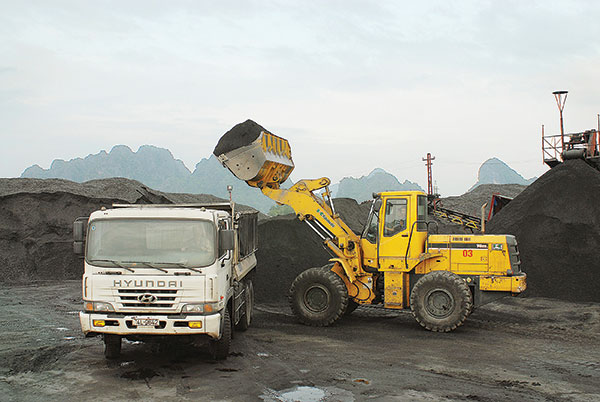Environment undermined by rampant mineral exploitation

Checks, inspections and auditing of mining activities remain hugely ineffectual Photo: Le Toan
Vietnam ranked 43 in the resource governance index (RGI) among 58 countries surveyed in terms of how each country regulates extractive industries such as oil, gas and mining. The survey was carried out in 2013 by the US’s Revenue Watch Institute (RWI) a non-profit organisation which monitors policies in resource-rich countries in addressing poverty, corruption and violent conflict.
The index grades each country on four areas: institutional and legal settings; reporting practices; safeguards and quality controls; and enabling environment, with the latter looking at how the government manages income from the country’s natural resources based on state-owned companies, natural resource funds and sub-national revenue transfers.
Matthieu Solomon, a representative of RWI said that Vietnam’s performance was judged as “weak”. Vietnam was considered naturally blessed with bountiful mineral resources. However, checks, inspections and auditing in mining activities remain loose, causing increased depletion while seriously hurting the environment.
Lai Hong Thanh, head of the Administration of Mineral Activities under the Ministry of Natural Resources and Environment admitted that Mineral Law 2010, effective on July 1, 2011, lacked guiding documents to carry it out.
He pointed out that the Vietnamese government had only enforced two decrees on detailing the implementation of a number of articles in the Mineral Law and providing auction of mining rights.
He added that the inspections had not been thorough, and that only 30-40 per cent of mining firms in Vietnam made periodical reports. In addition, the information contained in the few reports carried out was incorrect and incomplete.
Ho Quoc Dung, deputy chairman of Binh Dinh Provincial People’s Committee, a central province with the potential for titanium mining, said mining companies paid taxes based on their output which was reported by themselves, and not independently verified. Naturally, incorrect reports lead to uncontrolled mineral exploitation and the loss of the country’s mineral resources.
Le Dang Doanh, former director of the Central Institute for Economic Management (CIEM) added that mineral exploitation licences did not fully evaluate the environmental impacts of the projects.
Doanh added that the number of mineral exploitation licences granted by local authorities was also too many. “Sometimes, a single mine is divided into many smaller ones so that more licences can be granted,” said Doanh.
According to the Supervision Mission’s report, the number of mining firms in Vietnam increased rapidly, from 427 in 2000 to nearly 2,000 at present. Of which, enterprises exploiting minerals for making construction materials account for 1,200, mostly small and medium-sized ones. Furthermore, with the notable exception of state-run PetroVietnam and Vinacomin, the mining and mineral processing technology used by these companies is severely outdated.
What the stars mean:
★ Poor ★ ★ Promising ★★★ Good ★★★★ Very good ★★★★★ Exceptional
Latest News
More News
- Vietnam eases policy approval requirements, simplifies foreign and outbound investments (December 11, 2025 | 17:53)
- Vietnam masters core technologies of automobile value chain (December 11, 2025 | 17:46)
- VAL opens second line of largest soybean crushing complex in Southeast Asia (December 11, 2025 | 12:08)
- Vietnam urged to shore up supply-chain resilience amid global uncertainty (December 10, 2025 | 18:47)
- Unpacking new momentum in Vietnam’s M&A market (December 10, 2025 | 09:59)
- Forum honours outstanding M&A deals, strategies, and advisory firms (December 09, 2025 | 18:22)
- Vietnam enters defining phase of M&A growth (December 09, 2025 | 17:00)
- Landscape strong for domestic acquisitions (December 09, 2025 | 15:34)
- FDI in Vietnam jumps on additional capital and share purchases (December 09, 2025 | 13:56)
- THACO and Hyundai Rotem sign strategic railway partnership (December 09, 2025 | 12:14)


















 Mobile Version
Mobile Version